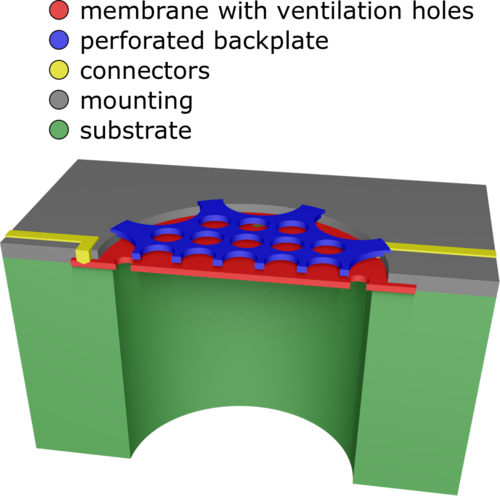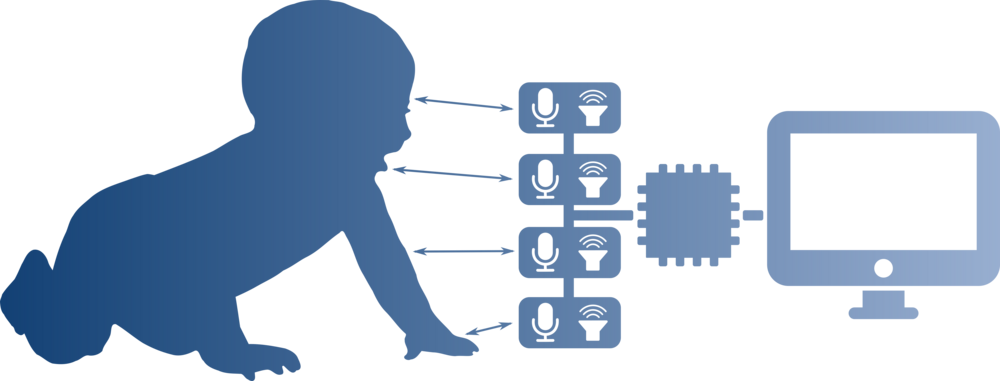Project description
The advances in microelectromechanical systems (MEMS) manufacturing enables the production of small and low-cost capacitive micromachined ultrasound transducers (CMUTs). In contrast to piezoelectric ultrasound transducers, which exploit the piezoelectric effect of certain materials in order to convert a voltage into an ultrasound wave and vice versa, capacitive ultrasound transducers consist of a parallel plate capacitor containing a fixed backplate and a flexible membrane. Applying an alternating voltage between the membrane and the backplate, the electrostatic forces cause a vibration of the membrane and generate an ultrasonic pulse. Due to the reversibility of the process, this effect may be also used for measuring incident ultrasound signals.
As a result of a significant decrease in manufacturing costs during the last few years, the application of capacitive ultrasound technology is facilitated in smart home applications, where low cost and lean design are crucial. In this joint project with Infineon Technologies AG, we implement systems composed of small arrays of CMUTs and investigate them in terms of spatial and temporal resolution, range, required hardware and energy consumption. Basic measurements with the MEMS transducers and acoustic simulations of several array geometries provide insights into the possibilities and limits of certain array layouts. Additionally, the influence of temperature, wind, atmospheric humidity and other influencing factors on the speed of sound, attenuation and reflectance are analyzed in order to avoid incorrect assumptions of certain input parameters and for the development of robust algorithms.
Ph.D. Project Facts
ISP Research Team
Daniel Lagler
Eugen Pfann
Mario Huemer
Partners
Infineon Villach, opens an external URL in a new window
Infineon Munich, opens an external URL in a new window
Duration
May 2018 - Apr. 2021
A second focus in this Ph.D. project is the development of signal and image processing algorithms with respect to dedicated tasks in smart home environments. This includes in particular the development and improvement of object and person detection algorithms, people counting or gesture recognition. In addition to classical signal and image processing approaches, segmentation and pattern recognition techniques and also machine learning approaches are investigated.

